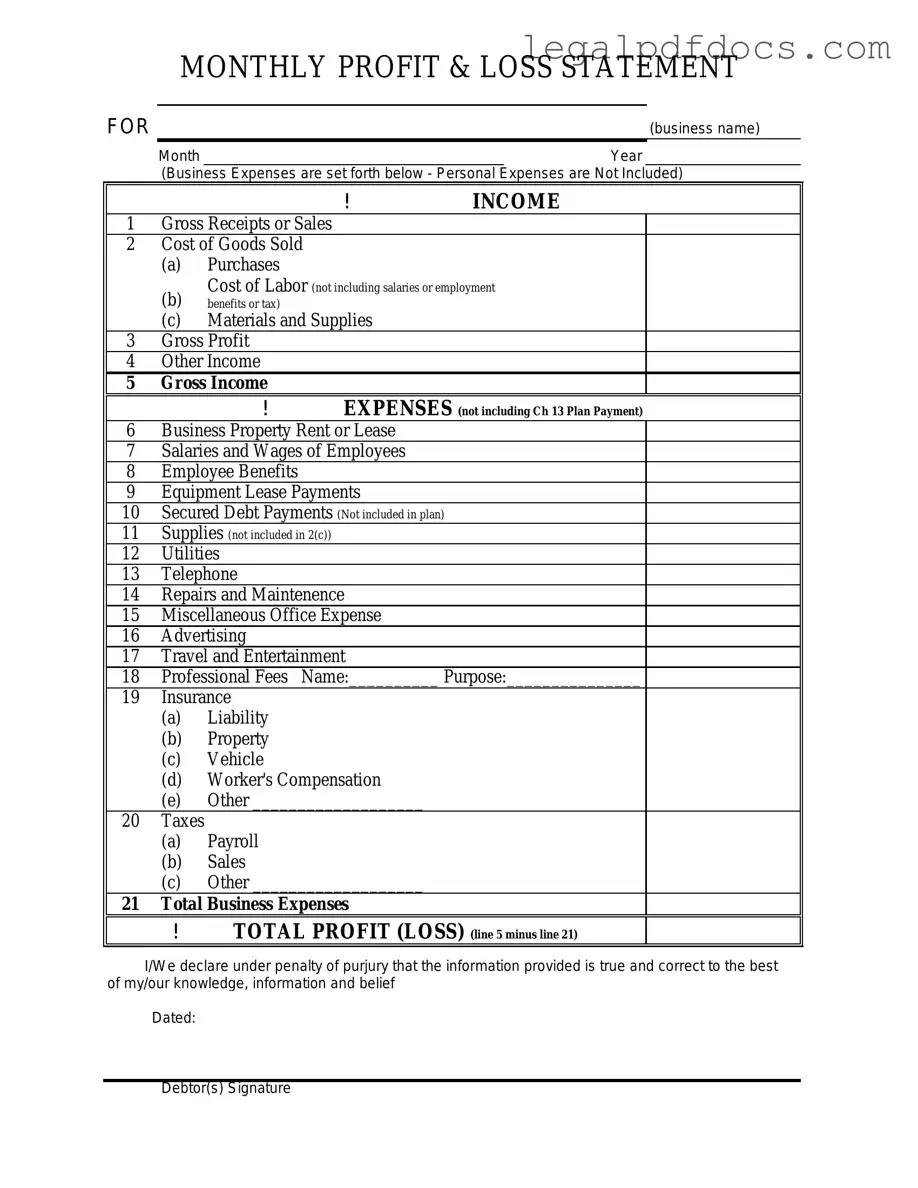The Profit and Loss form, often referred to as the P&L statement, serves as a crucial financial document for businesses of all sizes. This form provides a detailed overview of a company's revenues, costs, and expenses over a specific period, typically a month, quarter, or year. By summarizing the financial performance, it allows stakeholders to gauge profitability and make informed decisions. The P&L statement includes key components such as total revenue, cost of goods sold, gross profit, operating expenses, and net income. Each section plays a vital role in illustrating how effectively a company generates profit relative to its costs. Moreover, the P&L form can highlight trends in revenue growth or expense management, offering valuable insights for future planning. Understanding this document is essential for business owners, investors, and financial analysts alike, as it encapsulates the financial health of an organization in a clear and concise manner.
